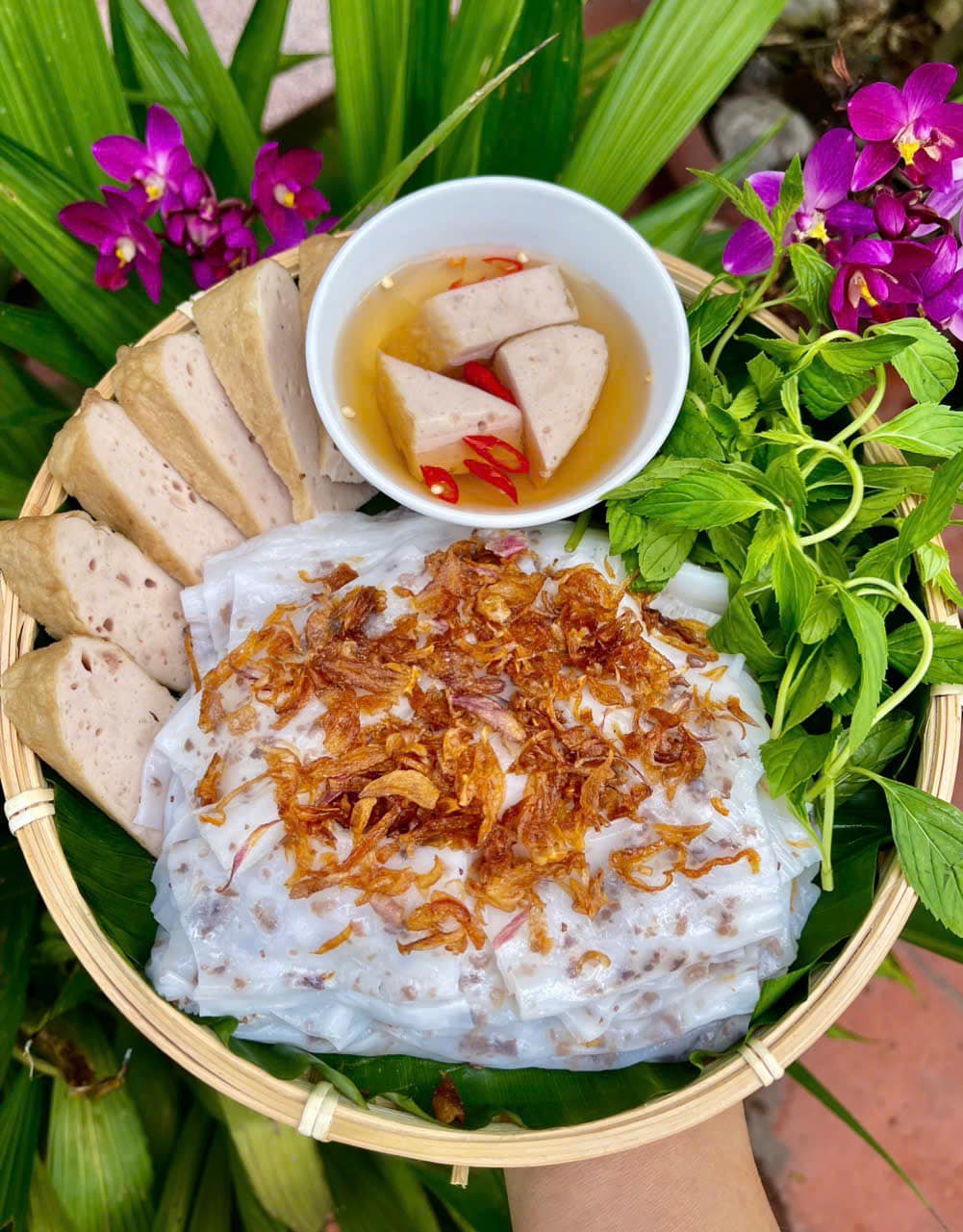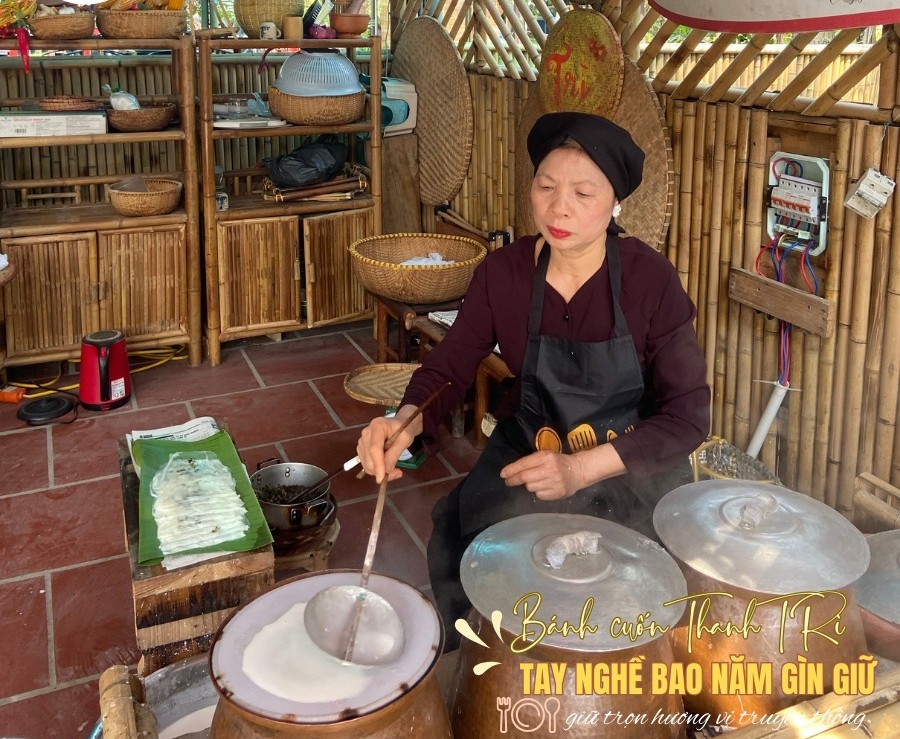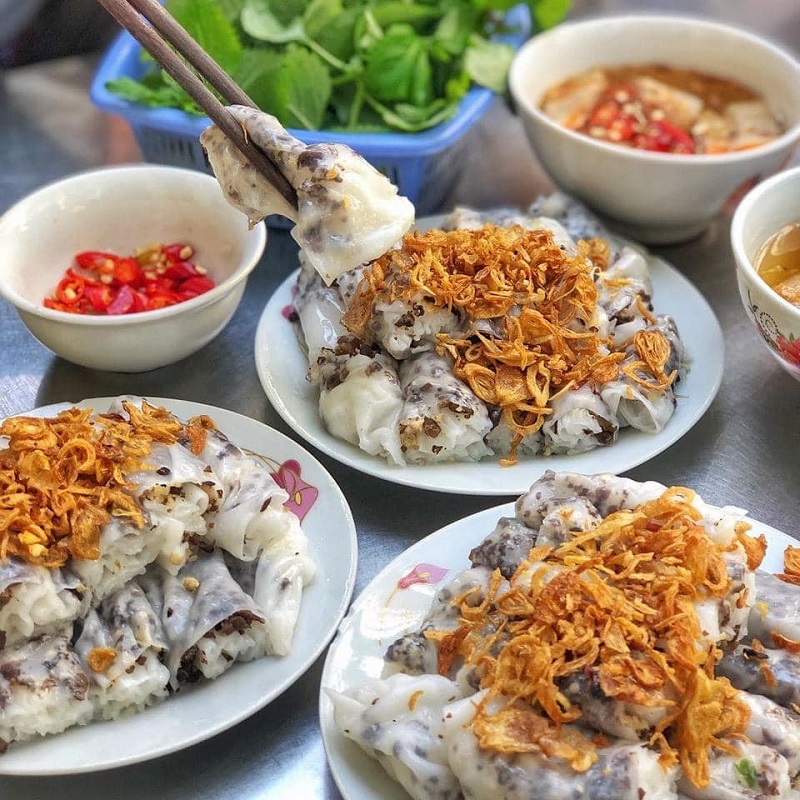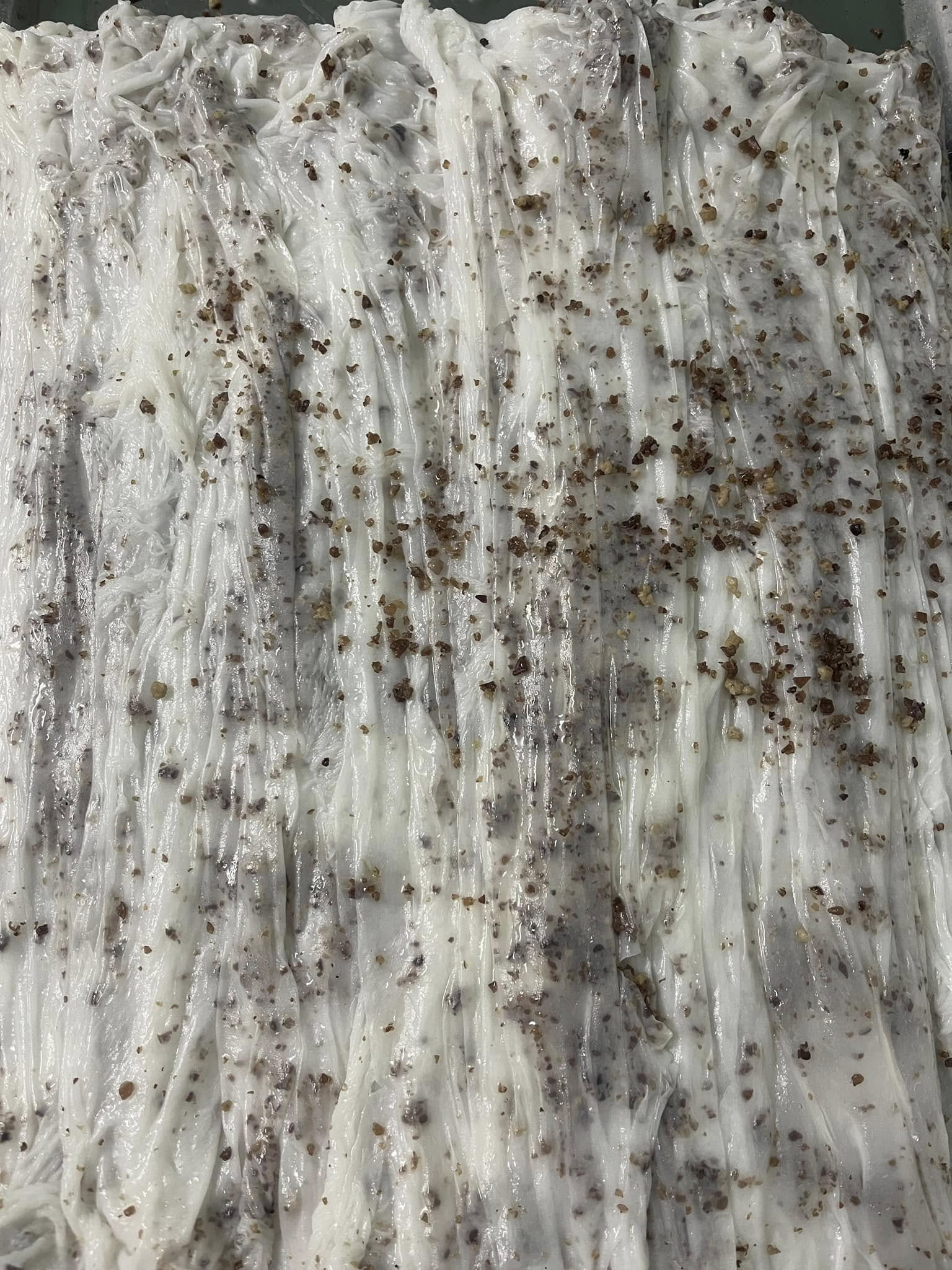Thanh Tri steamed rice crepe: Journey to delicacy
Hanoi’s delectable dishes are renowned in folk songs and culinary books, capturing diners' hearts at home and aboard.
THE HANOI TIMES — The people of Thanh Tri district, Hanoi, make their living mainly through trade and are particularly famous for their delicious banh cuon or steamed rice crêpes. This rich culinary tradition has inspired a folk song that has been passed down through generations:
“Thanh Tri has tasty banh cuon,
Ngu Nhac Mound and the Red River.
Thanh Tri has beautiful scenery and many people,
The bamboo flute on the green paddy fields.”

A dish of banh cuon Thanh Tri. Photo: Huong Anh
In January 2024, Thanh Tri Banh Cuon Village was listed one of the 14 "Craft Villages" and "Traditional Craft Villages" in Hanoi.
Throughout Hanoi’s culinary history, except for a few specialties such as Cha ca La Vong or Grilled Fish with Vermicelli, said to have been created by the Doan clan in the Old Quarter, it's very difficult to determine the age and creator of a particular dish. Local dishes are mostly "folk works" whose recipes are "orally transmitted" for generations and vary from region to region, absorbing different values and recipes. As Hanoi is the convergence of culinary quintessence from all over the country, its people today are proud to have a rich, globally acclaimed cuisine.
Banh cuon in general, and Thanh Tri’s banh cuon in particular, is no exception. However, the locality’s signature dish was specifically mentioned by prominent Vietnamese writers of the 20th century.

Hanoi's rustic dish of banh cuon is prepared by the chef at Vuon nha ba (Grandma's Garden) Banh cuon Eatery. Photo: Phuong Bac
In his book “Hanoi - 36 Streets” published in 1943, the late author Thach Lam wrote: “This is the authentic nosh: banh cuon, eaten with fatty pork bologna, or with hot fried tofu. But it must be Thanh Tri’s banh cuon, as thin as paper and as clear as silk. The rolls are smooth, soft, and have the aroma of flour.
Making Thanh Tri rice rolls is "very special and elaborate," he added. Simply put, the process is as follows: non-glutinous rice is soaked overnight, ground into flour with a natural stone mortar, and then mixed with the right amount of water. Next, the flour is spread on a stretched cloth over a pot of boiling water, resulting in thin, translucent sheets of rice. Then minced pork and wood ear mushrooms are stir-fried and placed on the rice sheets, which are then rolled up. The rice rolls are eaten with a dipping sauce made of fish sauce, vinegar, sugar, chili, and herbs, creating a distinctive, unforgettable flavor.

Thanh Tri's banh cuon becomes a favorite of not only Vietnamese but also foreign visitors to Hanoi. Photo: Phuong Bac
However, each family in Thanh Tri Village will keep the trade secrets of what kind of rice to use, how to mix it with water "right", how long to soak it, what techniques to use to make thin sheets without tearing, and so on.
Meanwhile, in "Hanoi Delicacies" in the 1950s, writer and journalist Vu Bang described the dish: "I've been to many rural markets, tried all kinds of banh cuon, but either the rice sheets were too thick, the ground floor smelled too much, or the scallion oil was too greasy; so they were all the same, which made me miss Thanh Tri's banh cuon even more."
The steamed rice roll is special because it's made in thin layers and coated with scallion oil, which looks fatty but tastes light and cool. In the basket, the sheets are stacked in layers; on green, jade-like banana leaves, the white color of the sheets stands out pleasantly.
Thanh Tri's banh cuon is mildly fragrant. Holding one, dipping it in the sauce, and bringing it to your mouth, you will feel a rhythmic harmony between the aromatic rice and the mild dipping sauce, not too salty, sour, or spicy.

Banh cuon Thanh Tri is extremely thin because it is cooked strictly according to the traditional method. Photo: Thu Quynh
When eating Thanh Tri's banh cuon, there was nothing more wonderful than adding some hot pieces of tofu, fried until puffed up and shiny like "gold powder."
Nguyen Tat Vuong, a native of Thanh Tri village, agrees with the depictions: "This is the traditional Thanh Tri rice crepe." Vuong, 46, who runs three banh cuon restaurants, one in Hanoi's Vincom Mega Mall Ocean Park and the other two in Ho Chi Minh City's District 3 and District 7, believes that almost every province in Vietnam has banh cuon or a similar rice crepe, which may go by other names such as banh muot or banh uot. But only Thanh Tri's banh cuon uses a dipping sauce that is totally different.
According to the restaurant owner, Thanh Tri banh cuon was originally made with simple, rustic ingredients such as non-glutinous rice, water, fried onions, wood ear mushrooms, and minced pork.
Vuong said: “I remember my parents telling me that in the old days, the vendors of the previous generation often carried banh cuon baskets on their heads and walked to the Kham Thien area to sell to the singsong girl guild.”
From the mobile stalls of street vendors, the dish has slowly made its way onto restaurant menus throughout Hanoi. This dish is a familiar breakfast for locals and attracts many domestic and foreign tourists.











